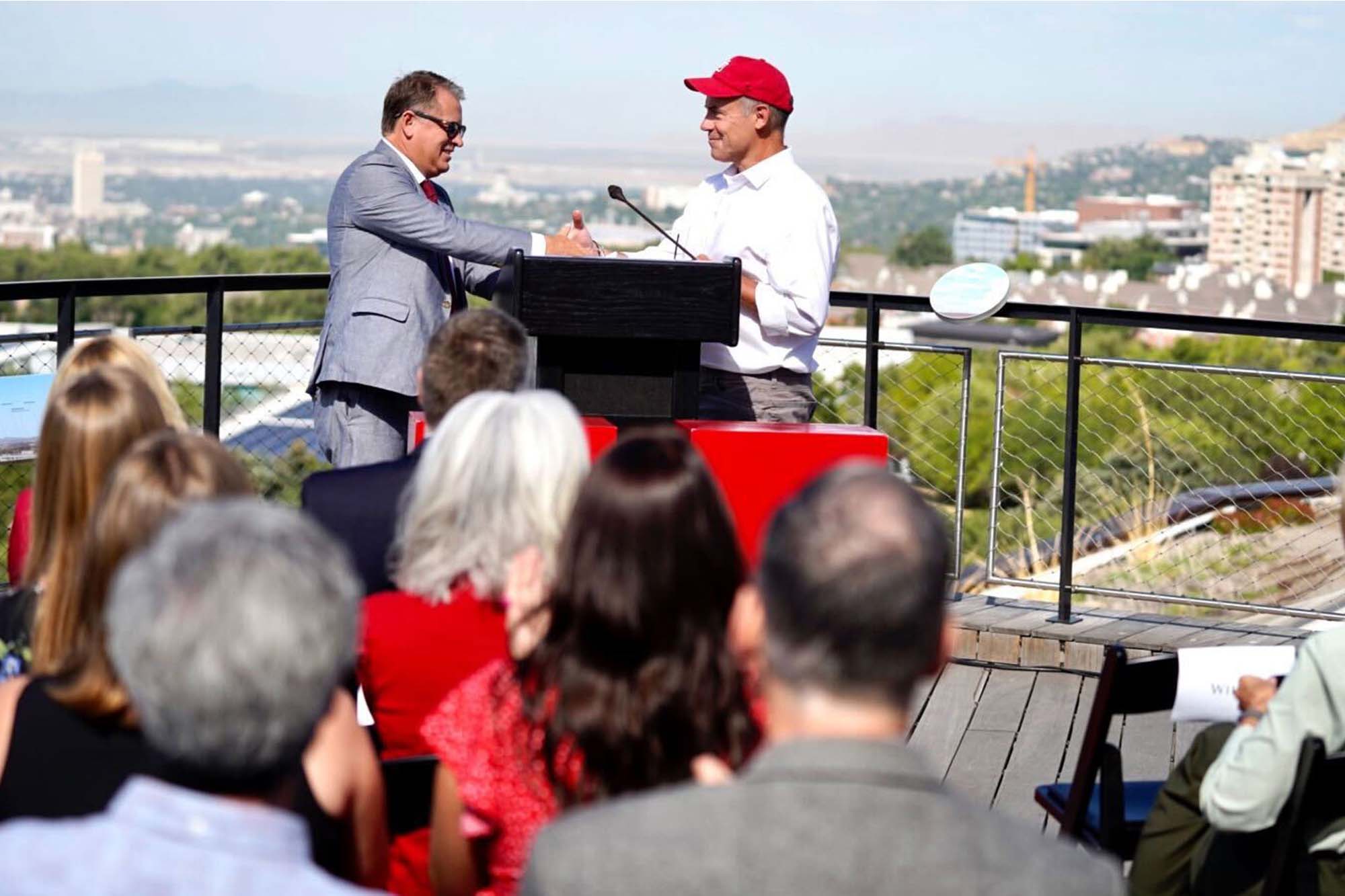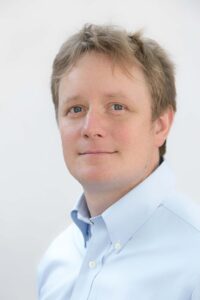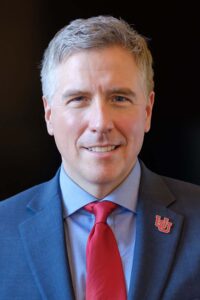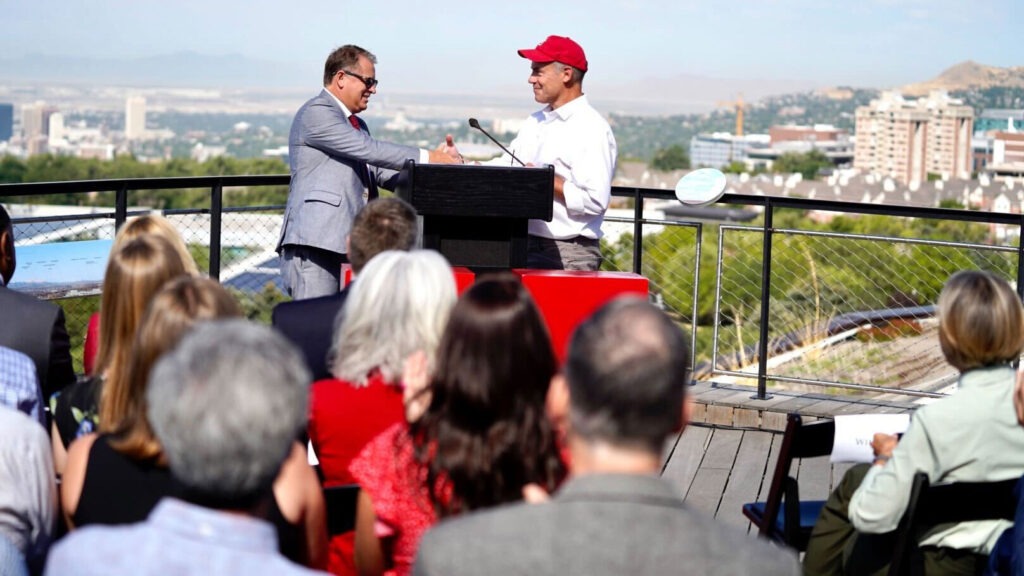
The geography that makes Utah unique—red rock deserts, greatest snow on Earth, cities amidst natural beauty—also makes us vulnerable to one of the biggest challenges of our time: Climate Change.


Climate change can drive or exacerbate severe drought, wildfires, air pollution, water scarcity, and disappearing snowpack. Luckily, the University of Utah has a deep pool of experts who use the campus location as a living laboratory to address these immense challenges.
A generous $20 million gift from Clay and Marie Wilkes will leverage the U’s location and interdisciplinary knowledge to create the Wilkes Center for Climate Science and Policy. William (Bill) Anderegg, biologist and director of the Wilkes Center, and Peter Trapa, dean of the College of Science in which the Wilkes Center is housed, spoke with @theU about the center.
What is the Wilkes Center for Climate Science and Policy?
Bill Anderegg: It’s a really exciting opportunity to bring together a huge amount of the expertise that we have across campus and generate practical and innovative solutions to one of the most pressing challenges in the 21st century. A key part of the center is to provide tools and evidence for making decisions. We want to get the best science in the hands of decision-makers and policymakers.
Peter Trapa: Yes—it’s an interdisciplinary center with foci around education, research, innovation, and entrepreneurship. All of these components are meant to foster new ideas toward actionable solutions to the problems posed by climate change. Some ideas can come from research. Some ideas can come from sourcing the enthusiasm of students who are coming in with fresh eyes. Some ideas can come through courses in entrepreneurship designed at fostering new business ideas around climate solutions. Notably, the center will also award high-profile monetary prizes to recognize and incentivize innovation.
What will be the types of projects involving the Wilkes Center?
BA: One example that we’re getting off the ground quite quickly is the Great Salt Lake Strike Team. We’re partnering with the U’s Gardner Center for Policy, the Land, Water, and Air Institute at Utah State University, the Division of Natural Resources and other state agencies. It’s a short-term, focused team to synthesize key areas about the threatened Great Salt Lake and what can be done about it, and to provide that information to the legislators before the next legislative session.
How will the Wilkes Center run?
BA: We’re still working out the details, but the overarching goal is to build a solid infrastructure to support research collaborations. There will be lots of Wilkes Undergraduate Scholars to support undergraduate research experience, and we will support graduate student climate research in partnership with the Global Change and Sustainability Center. We will also provide faculty research support through seed grants and post-doctoral scholars.
Another important piece is outreach, such as the Wilkes Research Summit. This annual summit will showcase research produced by the Wilkes Center and will bring together a huge number of stakeholders and leaders across academia, corporate, non-profit, and government, and facilitate dialogue about solutions to key climate challenges.
What distinguishes the Wilkes Center?
PT: We envision that the Wilkes Center will distinguish itself as a partner, or in some cases, the go-to place for scientific information to advise decision-makers, especially in certain domains around air, fire, and water. The Wilkes Center will leverage Utah’s unique geography and its positioning on the front edge of climate change.

The entrepreneurship piece is another distinguishing feature. We don’t typically think of entrepreneurship and corporate innovation in the same breath as basic research, but problems of this magnitude require an “all of the above” kind of approach to source impactful ideas.
The student experiential learning component will also be transformative. We’re going to be sending hundreds of students out into the field in Utah and the neighboring Western U.S. states to learn by doing. It may not be realistic for a freshman to come in and have deep ideas about climate change research, but it’s entirely reasonable to foster their innovative sprit by involvin g them in a project, say, to design and deploy inexpensive ambient air quality detectors to collect and analyze data. As they learn more, they can translate that innovative spirit into action.
BA: The Wilkes Center aims to be strategic and nimble, so that we can quickly capitalize on opportunities to have a large impact. We want to build the infrastructure to help faculty get their research into the hands of decision-makers, and vice versa. It’s a two-way dialogue, and we want keep channels of communication open and build trust. I think that would be an enormous impact in helping to solve the climate problem.
This interview originally appeared in @theU
Click on the links to watch President Randall’s and Clay Wilkes’ remarks announcing the Wilkes Center.
More about the announcement here.
